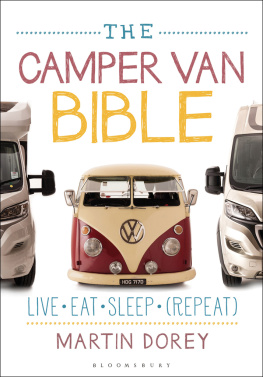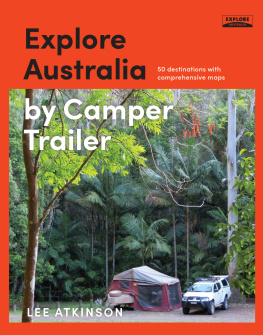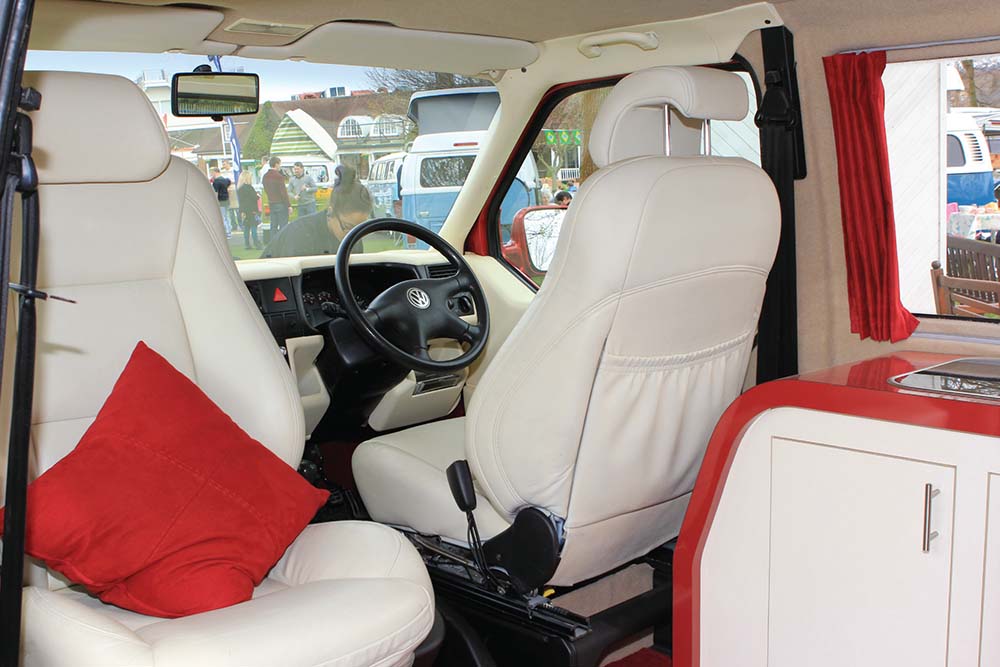All rights reserved. No part of this publication may be reproduced or transmitted in any form or by any means, electronic or mechanical, including photocopy, recording, or any information storage and retrieval system, without permission in writing from the publishers.
Special thanks are due to Sam and Laura Jeffery of VWorks, a VW restoration and conversion specialist based in Kent. Sam learnt his trade working for a large camper van conversion company before setting up his own business. The company works on every type of classic VW, completing everything from interior makeovers to ground up restorations. They have even converted a Split-Screen camper into a mobile tea shop, complete with opening roof and side counter. The project detailed in these pages would not have been possible without Sams guidance and assistance, not to mention use of workshop space. It is thanks to his knowledge and input that the conversion undertaken here should be within the abilities of most competent home enthusiasts. More information and details of the projects undertaken can be found at vworks.co.uk.
Thanks must also be given to Mike Devine of Cheshire Motor Caravans, who provided some of the major components in the van, including the roof and bed. The company was always helpful and provided answers whenever a question arose as to the best way to fit a particular component. If you are looking to convert a T5 or T4, CMC are a good bet for parts. Nearly all of their kit is designed and built in-house and is excellent quality. Check out their website at c-m-c.org.
1 introduction and buying guide
The saying home is where you park it was coined around the image of hippies and beatniks wandering the countryside in VW vans through the heady days of the Summer of Love. Times may have changed, but the appeal of a mobile home away from home still appeals to many. In order to fulfil this yearning, some opt for a behemoth motorhome, while others lean towards the scourge of the holiday traffic jam, a caravan. But by far the most sensible solution is a van-based camper, providing sufficient interior space to prevent claustrophobia, but not so large that you need planning permission to park it.
There is a plethora of different-sized, pre-converted camper vans from a variety of manufacturers available; the most predominantly available are those based on VWs range of commercial vehicles. If you decide to purchase a ready-to-go camper, hopefully this book will still be of use in determining the differences between the host of specifications available, and, if buying a used conversion, what problems you should look out for. However, this type of camper van comes with a hefty price tag. At the very top of the tree, a new VW-produced California camper will set you back north of 50,000, while conversions from the likes of Danbury are between 30,000 and 40,000. Second-hand values are also strong, with the starting point for good- quality T4-based vehicles at around the 10,000 mark and T5s at 1520,000. Compared with the prices of the vehicles upon which they are based, this is a big premium; for example, in the 2013 market a low-mileage 2007 VW T5 panel van can be had for around 7,000.
This gulf in values makes the option of converting a van yourself an attractive one. If you have a modicum of DIY skills, you can save a considerable amount of cash in your pursuit of camper-van Nirvana. In addition, you will have complete control over the form and features of the end product. To help you achieve this, the aim of this book is to cover all of the key aspects of converting a VW T4 or T5 panel van into a camper. It will help you ascertain the basics of buying a modern van, what to look out for and which models are most appropriate as a basis for conversion. All of the jobs undertaken to complete the conversion will be within the abilities of a competent DIY mechanic with access to basic hand and power tools.

T5 California. VOLKSWAGEN
WHY A MODERN VW?
After nearly 40 years of following a cab forwardrear engine design for its vans, in 1990 VW finally developed a front-engined platform light commercial vehicle, dubbed the T4. While many say that the vans of the modern generation lack the character of VWs older offerings, notably the Split and Bay Windows of the 1950s and 1960s, there is no disputing their practicality. In recent years this new generation of vans has developed a strong following amongst VW enthusiasts looking for the renowned VW build quality and style, without the hassle of running a classic car.
Driven back to back, the difference between a T25 and a T4 is like night and day; where the T25 feels very much like a van, the experience of the T4 is much more akin to driving a large family car. Move up to a T5 and the difference is even more startling, with levels of refinement and comfort that will surprise drivers used to commercials from other manufacturers. It would be fair to say that vans from other manufacturers such as the Ford Transit and the Vauxhall Vivaro fulfil essentially the same role as a VW Transporter, but they do not carry the same cachet in terms of brand identity.
BUYING A VAN
The Basics
Some T4s have been around for over twenty years now, and the earliest T5s are over a decade old, so there are many well-worn examples on the second-hand market. While this means that there are some good bargains to be had, it also follows that there are some that are best avoided. The biggest factor to consider when buying either model is that the majority of vans will have been used by tradesmen, or, in the case of Caravelles, by taxi or executive transport companies. This invariably means that they will have led a hard life. In some cases, this is not necessarily a bad thing a diesel that has been well cared for can happily see the far side of 200,000 miles, provided the correct service intervals have been adhered to.
A quick search of the online classifieds will yield many hundreds of vans, to suit all budgets. A rough and ready T4 can be had for a few hundred pounds, while a nearly new top-spec T5.5 will cost upwards of 20,000. It is important to bear in mind your overall budget for the conversion when buying your base vehicle, but buy the best you can afford. While it is not a major issue to have to save a little longer for an interior trinket, it is a much bigger problem if your base vehicle turns out to be a money pit, requiring constant remedial maintenance.



















